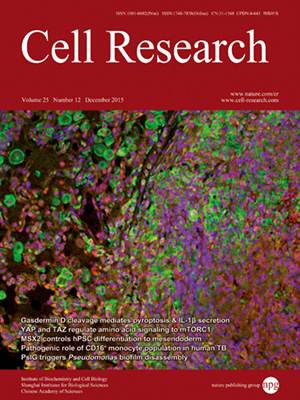
Volume 25, No 12, Dec 2015
ISSN: 1001-0602
EISSN: 1748-7838 2018
impact factor 17.848*
(Clarivate Analytics, 2019)
Volume 25 Issue 12, December 2015: 1372-1375
LETTERS TO THE EDITOR
CRISPR/Cas9-mediated genome engineering of the ferret
Zhaohui Kou1,*, Qian Wu1,*, Xiaochen Kou2,*, Chonghai Yin1,*, Hong Wang2, Zhentao Zuo1, Yan Zhuo1, Antony Chen3, Shaorong Gao2 and Xiaoqun Wang1
1State Key Laboratory of Brain and Cognitive Science, CAS Center for Excellence in Brain Science and Intelligence Technology (Shanghai), Beijing MRI Centre for Brain Research, Institute of Biophysics, Chinese Academy of Sciences, Beijing Institute for Brain Disorders, Beijing 100101, China
2Clinical and Translational Research Center of Shanghai First Maternity and Infant Health Hospital, School of Life Sciences and Technology, Tongji University, Shanghai 200092, China
3Wuxi Sangosho Biotechnology Corporations, Wuxi, Zhejiang 214142, China
Correspondence: Shaorong Gao, E-mail: gaoshaorong@tongji.edu.cn; Xiaoqun Wang,(xiaoqunwang@ibp.ac.cn)
Ferrets (Mustela putorius furo) have served as one of the most valuable animal models for recapitulating human disease since 19331. This is because they show many similarities to humans in terms of physiological features of brain function and reproductive biology as well as pathological characteristics of various diseases such as cancer, influenza infection and cystic fibrosis2,3,4. Despite these advantages, the current use of ferrets in research is significantly limited due to the lack of a method enabling precise genetic modification.
10.1038/cr.2015.130
FULL TEXT | PDF
Browse 2481


